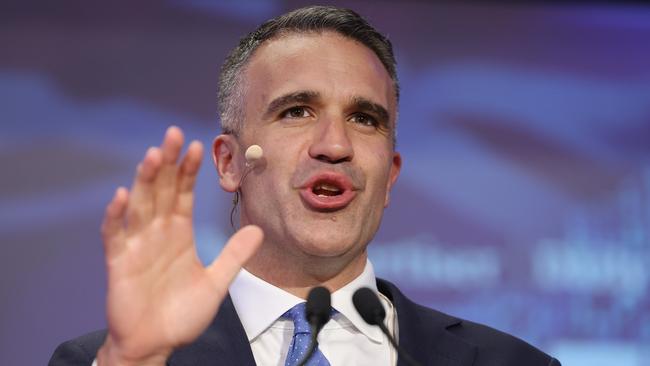Australian Bureau of Statistics figures show Adelaide slowest-growing capital in 50 years | Paul Starick
It’s official, Adelaide has been the nation’s slowest-growing capital for years and the brain drain of our young people continues, writes Paul Starick.

Opinion
Don't miss out on the headlines from Opinion. Followed categories will be added to My News.
South Australia, we have a growth problem.
Adelaide has the slowest growth of any Australian capital in the past 50 years, official statistics released on Tuesday reveal.
In an overview of Australia’s capital city population change between 1971 and 2021, the Australian Bureau of Statistics found Darwin grew by 281.5 per cent, Canberra by 200 per cent, Perth by 194.4 per cent, Brisbane by 168.2 per cent, Melbourne by 90.9 per cent, Sydney by 74.4 per cent, Hobart by 59.8 per cent and Adelaide by 58.7 per cent.
In observations about Brisbane, Adelaide and Perth, the ABS noted Perth’s population overtook Adelaide’s in 1984 and has continued to grow at a faster rate ever since.
In 2021, Perth’s population of 2,192,229 in mid-2021 was 56 per cent more than Adelaide’s 1,402,393.

Making matters worse, the much-vaunted “end of the brain drain” during the past few years is a mirage.
The-then Liberal premier Steven Marshall in August last year, rightly, trumpeted Adelaide defying the nation’s biggest population drift from capital cities in 20 years to record a slight gain – the first since 2002.
But closer analysis of an ABS dataset showing net interstate migration by age category shows young people are still fleeing the state.
In the year to June, 2022, once borders had reopened, there was substantial net interstate migration of 1400 out of SA for people aged 20-34 years. Presumably, they were leaving SA at the start of their careers in search of opportunity.
By contrast, a substantial majority of the net migration into SA was by people aged 50 and older. In fact, there was negative net migration for people aged less than 60. The biggest numbers of people moving to SA were in the 50-64 age group – net positive interstate migration of 1220.

Hearteningly, a trend for more people aged 34-49 to migrate to SA than leave continued. There was a net interstate migration to SA of 70 people – in 2016/17 there was net interstate migration from SA of 1350 people.
In summary, older people are those returning to SA while younger people are leaving in droves.
There are immense consequences of slow population growth, when coupled with a continued brain drain of young people. People’s lifestyles suffer, even if many hope to preserve Adelaide and SA’s enviable attractions by keeping things as they are. Comparatively fewer people means a smaller tax base to fund public services and less clout on the national stage to attract federal spending.
Evidence presented in February to The Advertiser’s Building a Bigger, Better South Australia forum included stark gross state product figures, which measure the economy’s size. These showed SA’s growth since 1990-91 had averaged 2.1 per cent, compared to the national average of 2.9 per cent – if SA’s share had stayed at 1990-91 levels the economy would be $29bn larger.
The $29bn gap between SA’s economic output and the national average is slightly less than twice the total cost of the $15.4bn Torrens to Darlington motorway.

The-then Committee for Adelaide chief executive and former soccer star Bruce Djite was unfairly howled down by some in February for daring to suggest that Adelaide should grow to a city of two million during the next decade.
Subsequently, Mr Djite in May credibly argued that population growth was vital so SA could flourish economically, socially and culturally.
“To achieve this, we must attract enough skilled talent, including homegrown, interstate, and overseas talent, to establish and expand local businesses with global reach, as well as improving the vibrancy and establishing the critical mass required to further improve our quality of life. None of this is possible if we continue to regress relative to the rest of the nation,” he said.

Premier Peter Malinauskas aspires to “dramatically grow the state’s economic complexity”, by building satellites and nuclear-powered submarines. He wants to continue Mr Marshall’s legacy by growing cyber, biotech, machine learning and other hi-tech industries which his Liberal predecessor worked hard to foster.
“That matters, of course, because our ambition is to ensure that the next generation of South Australians enjoy the same opportunities that were enjoyed post World War Two in the late 1940s and the late 1950s,” Mr Malinauskas said in a December 2 speech, arguing the opportunity ahead was similar to the Playford-era industrialisation jobs and population boom.
SA’s economic and population growth problems will not be solved by hankering for the good old days or seeking stagnation. Rather, they require Mr Malinauskas and other leaders to aim high, in the interests of future generations’ prosperity.





